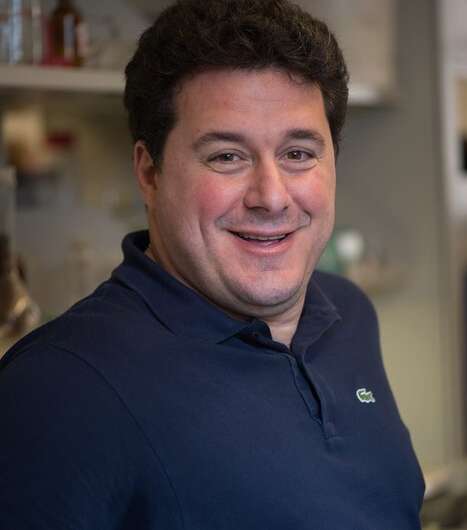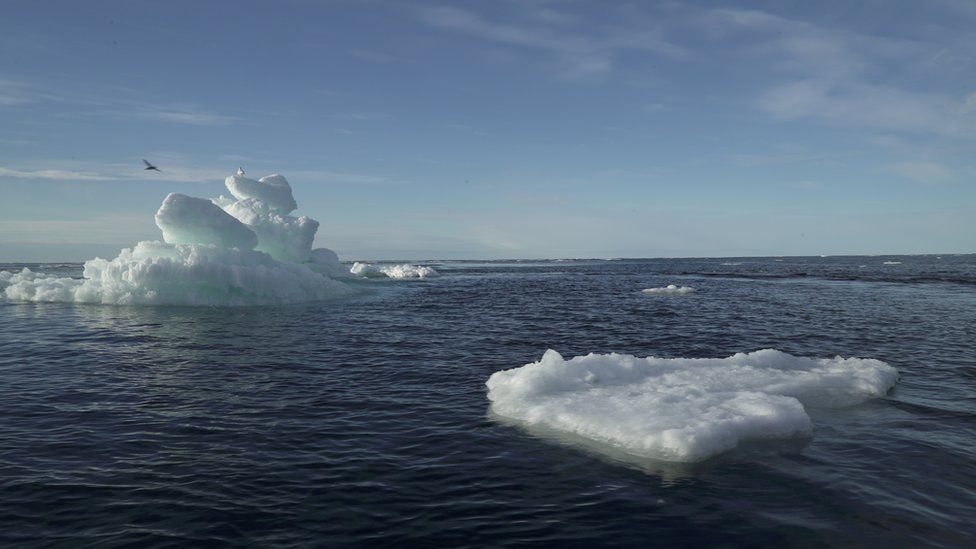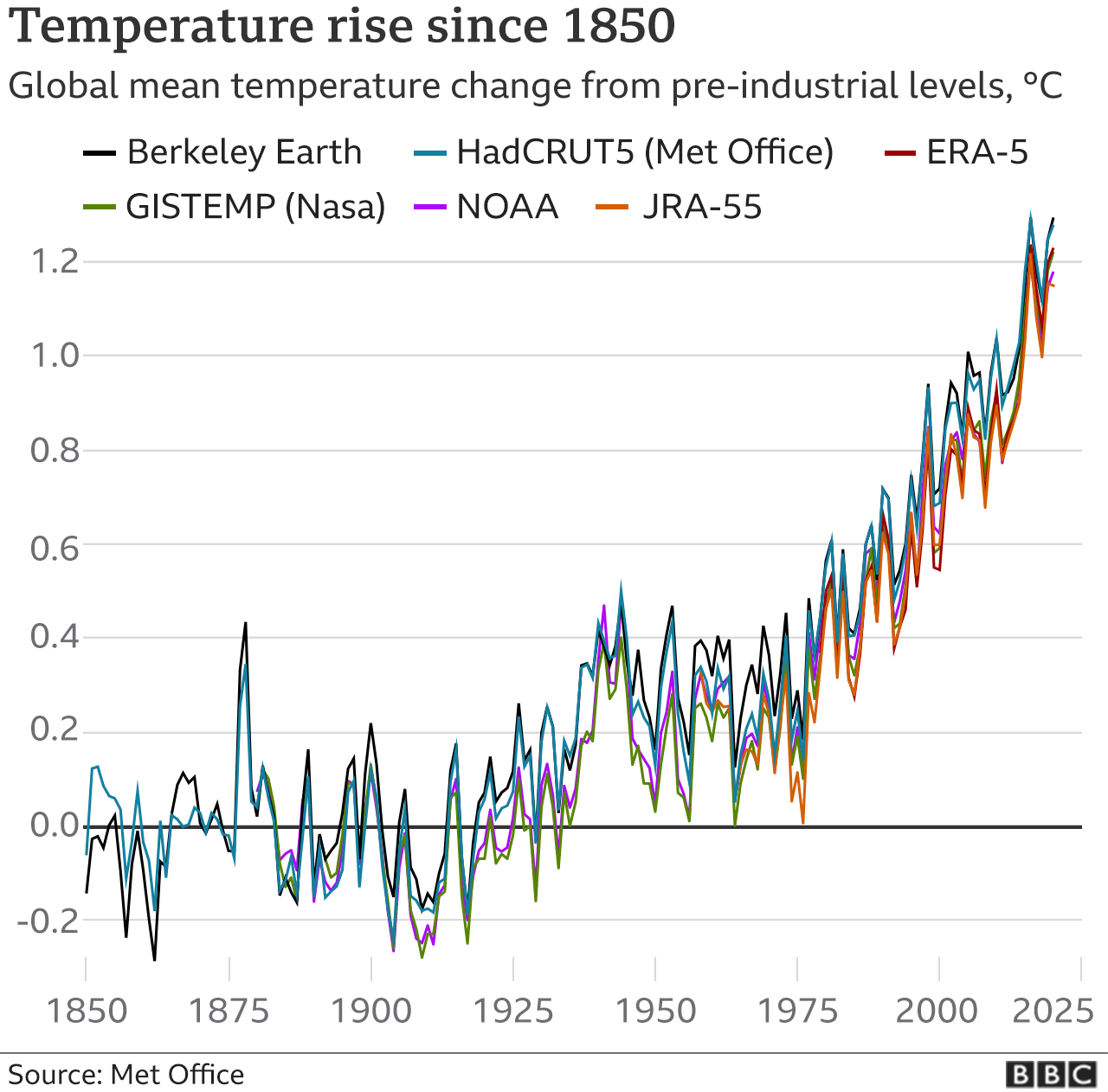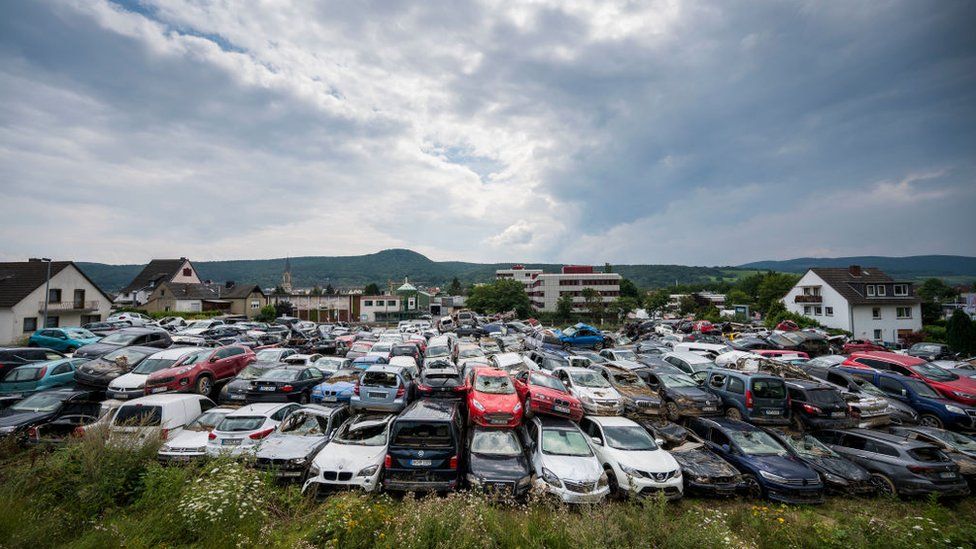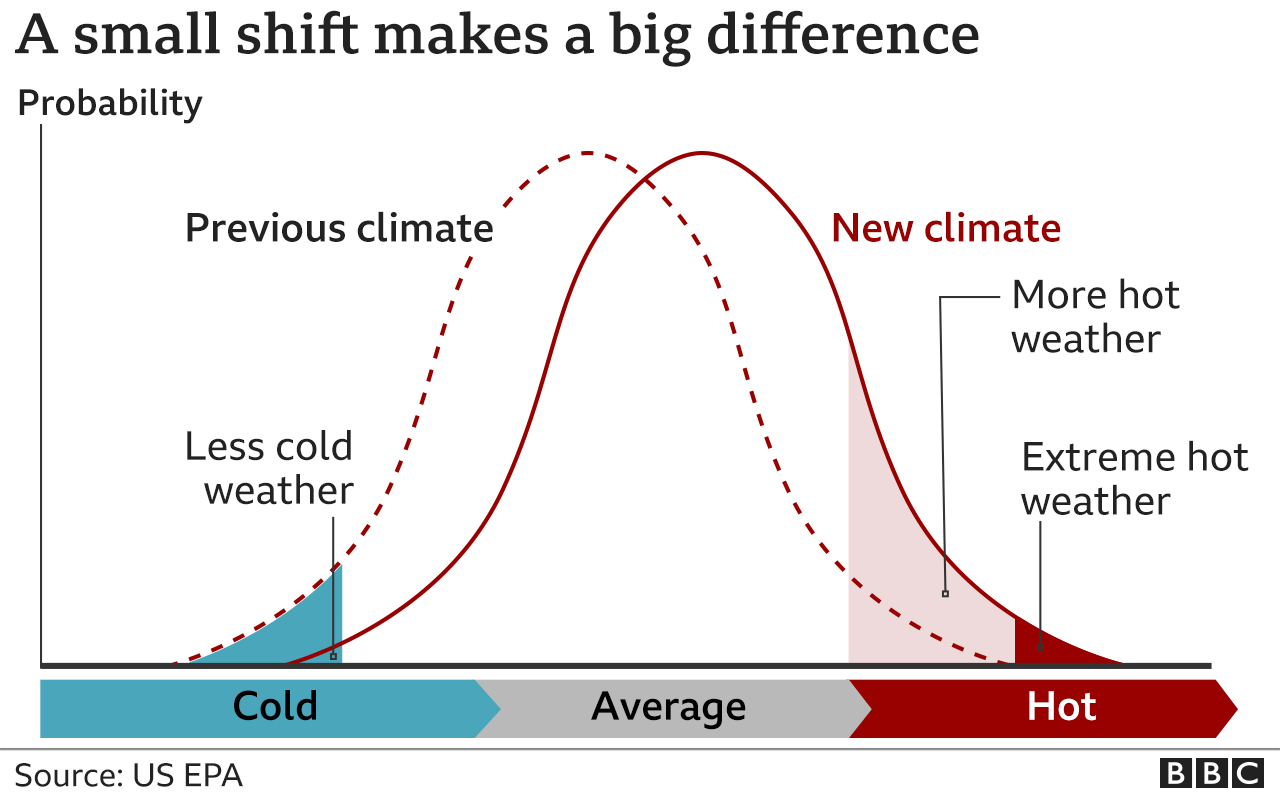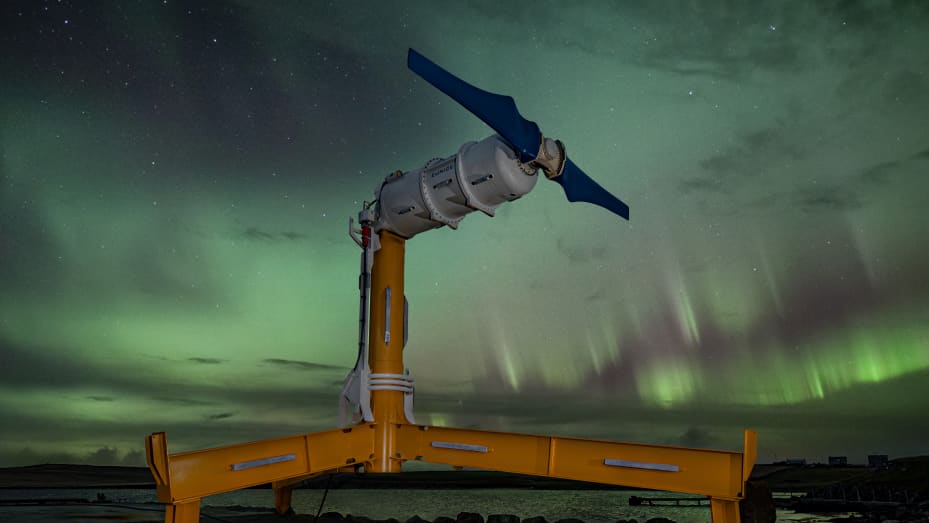HYDROGEN UPDATES
The weekend read: ‘Hydrogen is the flagship of the energy transition’

Ankica Kovač, head of the Power Engineering Laboratory at the University of Zagreb, at the hydrogen fuelling station situated outside her lab.
Image: Ankica Kovač
From pv magazine 07/2021
Your laboratory at the University of Zagreb has its own solar power plant and green hydrogen production – what is the nature of your research there?
This solar power plant, which I am very proud of, is installed on the roof of the Power Engineering Laboratory and serves for green hydrogen production. The electrolyzer is installed in the first Croatian hydrogen refueling station, located in front of my lab. With a pressure of 30 bar, this HRS (Hydrogen Refueling Solution) serves the first Croatian hydrogen-powered bicycle, which was also developed in my lab.
At the moment I am working on improving the system of green hydrogen production via solar electrolysis. This implies both fundamental and development research in the new design of electrolyzer stack of improved efficiency, as well as applied research on commercially available system components such as PEM (polymer electrolyte membrane) electrolyzer stack, PEM fuel cell stack, and hydrogen storage tank. Also, a novel system component that attracted my attention recently is the electrochemical hydrogen compressor. It operates similarly to a PEM electrolyzer in the context of the membrane, but as the technology is so new, I am still learning. But novel innovation like this compressor is exactly why I am so passionate about hydrogen technology; it opens a large space for the realization of great research curiosity.
You’re a guest editor for the International Journal of Hydrogen Energy. In your recent “Hydrogen in energy transition: A review” article, you tracked the progress of green hydrogen. How would you say the technology and its applications currently stand? And where do you see it in the near future?
According to the EU hydrogen strategy, the key to an accelerated transition to renewable energy sources (RES) is energy storage, and especially green hydrogen storage. If hydrogen systems were built next to the systems that use RES, the surplus electricity from RES variability and intermittency could be stored. Future production, according to current projections, is still from solar and wind energy, but the compensation for variability goes to hydrogen. The energy transition to RES is urgently needed on a large scale due to the threat of climate change, and it can be accelerated by reliance on mass green hydrogen production.
In the near future I expect some expansion of green hydrogen-powered FCEVs, as well as the replacement of natural gas with green hydrogen in steel production, fertilizer production, and, in part, for heating buildings where justified. Green hydrogen will also be used in the production of synthetic fuels for aircraft and ships.

Croatia is in the process of implementing a national hydrogen strategy. What will the green hydrogen market look like in Croatia compared to other European nations?
The government established an expert working group of 11 members to draft a proposal for the Croatian Hydrogen Strategy.
The strategy will give a national vision of development, research, production, infrastructure, and the use of hydrogen and hydrogen technology, with the goal to contribute to climate neutrality by 2050, as well as national targets related to the development of infrastructure for alternative fuels. The goal of the strategy is the decarbonization of hydrogen production and the use of green hydrogen as a substitute for fossil fuels. Croatia’s hydrogen strategy will send a clear message to all those interested in investing in hydrogen technology that the state is on their side.
I believe that Croatia can find its place in the hydrogen energy economy in all four areas of hydrogen technology, from production, through storage to transport and the use of green hydrogen. I have stated many times and I repeat it now: The current situation is such that Croatian companies with investments in green hydrogen cannot make a mistake. Among other things, I would like to emphasize the possibility of involving Croatian companies in the equipment production sector (such as electrolyzers and fuel cells, valves, measuring and control equipment, sensors, etc.) which would ensure the rise of the Croatian economy on the European and world market stage. Here I would especially like to point out shipbuilding with hydrogen as a propellant and electric propulsion (hydrogen fuel cells plus electric motors) in maritime transport. It is still a relatively undeveloped area [hydrogen ships] and I am sure that Croatia has a lot to offer. Now we have an extraordinary opportunity to create a Croatian hydrogen brand. The only thing we have to do at this time is to be brave: dare to sail in these, for Croatian companies, slightly unknown waters, and the result will not be missed.
On the world stage, the demand for hydrogen systems is currently such that soon the existing production capacities will not be able to meet all the demand. If that’s not a good enough invitation for our companies, then I don’t know what is.
What do you see as the biggest challenge for the development of green hydrogen?
The biggest challenge I see is that the consequences of global temperature increase above 2°C have not been adequately presented to the public. Education at all levels should not be neglected. People need to know what is happening, why it is happening, and what the possible exits are. It must be explained how and why hydrogen technology is replacing fossil fuel-based technologies and what the price of hesitation is.
How do you currently see the green hydrogen economy? Will it be a case of countries like Saudi Arabia and Australia becoming export superpowers because of their solar advantage compared to countries in, say, Northeast Asia and Europe?
The key to establishing a green hydrogen economy is mass green hydrogen production. Mass production requires cost reduction, functionality and predictability for investment, and it requires a comprehensive regulatory framework. Of course, it also requires sufficient additional RES and the associated transmission infrastructure to the hydrogen production site. For the EU to compete it will need to implement the missing infrastructure as soon as possible.
According to some research, by 2050 RES could make up 100% of primary energy sources in the EU, of which green hydrogen could make up 20% to 30%. The current price is not attractive at all (€2.50–€5.50/kg), while the cost of producing hydrogen from fossil fuels is about €1.50/kg.
European production of green hydrogen may not in itself be sufficient to meet European demand because the decarbonization of some sectors will require large amounts of green hydrogen. We already have negotiations between countries such as Germany and Morocco, Portugal and the Netherlands, Australia with Asian countries, etc. In the meantime, Australia, Saudi Arabia, and Chile are aiming to become the world’s export superpowers of green hydrogen. Green hydrogen should become an integral part of EU international cooperation in general, including climate diplomacy.
You’re a great proponent of hydrogen transportation – I’m thinking of the H2LAB project. You were also part of the team that installed Croatia’s first hydrogen refueling station. How will green hydrogen change the transport industry?
Yes, I am the leader of several projects with an impact on the introduction of hydrogen technology on all levels. One of these is the H2LAB project that is funded by Croatian Science Foundation. It is focused on advanced methods of green hydrogen production and its transportation. Such projects include the first Croatian hydrogen-powered bicycle, the first Croatian hydrogen refueling station, and the Croatia Mirai Challenge, a road trip from Zagreb to Brussels to raise awareness about CO2-free transport. This was the first time that FCEV was driven on Croatian roads. I’m proud to have been behind the wheel.
Hydrogen propulsion is being introduced in all segments of transport, road, rail and sea, and hydrogen technology has gone so far that today there are also ultra-light fuel cells and hydrogen tanks used in aircraft and drones.
What’s next for green hydrogen?
If we look at the EU hydrogen strategy, it is mass production realized by electrolyzers utilizing RES. It is hydrogen storage realized in high-pressure tanks, and it is the conversion of hydrogen into electricity carried by fuel cells. Green hydrogen has the potential to be a great alternative especially since it can be stored in large quantities over a long period of time, and thus can bridge seasonal fluctuations in demand. Hydrogen can be transported by trucks, ships, or pipelines, allowing energy from RES to be stored where it is most efficient. Hydrogen also allows long-distance transportation and energy integration without overloading the power grid.
In order to reduce the cost of green hydrogen and for optimization purposes, research, development, and innovation are needed throughout the value chain. We also need industry-level demonstration projects to be able to apply hydrogen-based solutions to in-demand sectors. In the first period from 2020 to 2024, the strategic goal is to install at least 6 GW of electrolyzers in the EU to produce up to one million tons of green hydrogen. Given the extreme decline in electrolyzer prices, it is estimated that by 2030, green hydrogen will be price competitive to hydrogen produced from fossil fuels, and this is why hydrogen is the flagship of the energy transition.
Hydrogen-powered aviation will be tested on turboprops at new venture

The dream—and the hype—of hydrogen-powered, zero-emissions aviation will prepare for takeoff from Moses Lake in Central Washington.
An ambitious new project aims to modify small regional turboprop aircraft there to fly on hydrogen fuel, test and certify them to carry passengers, and potentially offer a long-term solution to aviation's carbon emissions by demonstrating that hydrogen aviation is economically viable.
Los Angeles-based startup Universal Hydrogen, led by Paul Eremenko, former chief technology officer and leading clean energy visionary at both Airbus and United Technologies, is developing the technology to retrofit mid-sized turboprop aircraft to run on hydrogen.
Partnering with Universal Hydrogen are aerospace engineering and certification firm AeroTEC of Seattle, electric motor company MagniX of Everett and New York-based Plug Power, which has a hydrogen fuel cell facility in Spokane.
"Our goal is to have butts in seats on commercial, revenue-generating flights as quickly as possible, said Eremenko in an interview, adding that he anticipates achieving Federal Aviation Administration certification in 2025.
Challenging technology
First up for retrofit is the De Havilland Canada DHC-8 turboprop, commonly known as the Dash 8.
The version that will be converted is not the larger model flown locally by Alaska Airlines but a smaller one that typically seats about 50 passengers.
The company plans to tear out 10 seats to accommodate the large capsules full of hydrogen that will be the plane's fuel, reducing the capacity to about 40 passengers.
Later, the project will do the same modification for the ATR 72 turboprop, with seating reduced to about 58 passengers post-conversion.
The technology that must be developed is complex and will require innovation.
Universal Hydrogen proposes to set up an extensive logistics infrastructure to deliver to airports twin packs of 7-foot-long, 3-foot-diameter capsules of hydrogen that can be loaded and unloaded quickly.
Plug Power, which currently builds ground-based hydrogen fuel cells that generate electricity from hydrogen, will have to develop much lighter fuel cells that are certifiable to airplane safety standards.
MagniX will build the motors that use the electricity to turn the propellers. It has already built similar motors for battery-powered electric airplane prototypes.
Linking all this together, Universal Hydrogen must integrate all the ancillary equipment wrapped around the fuel cell and the electric motor, including the electronic control algorithms for the entire system as well as compressors, humidifiers and the cooling systems for the fuel cell and the motor.
Batteries will be added for reserve power.
AeroTEC's engineers, meanwhile, will have to modify the airframe—designing a new cargo door through which to load the hydrogen capsules and holding fixtures for all the equipment—and then shepherd the complete aircraft through the FAA certification process.
Roei Ganzarski, CEO of MagniX, which employs about 60 people in Everett, said this work represents the future of aerospace. Having it all here in Washington, he said, "puts the state in a position of leadership for all things electric aviation."
Eremenko attributed his choice of Moses Lake to the "tremendous aerospace and cleantech workforce" in the region.
Emily Wittman, CEO of the state trade group the Aerospace Futures Alliance, said "the possibilities for our state's aviation sector are enormous."
Lee Human, president of AeroTEC, which has a total workforce of about 250, said he expects about 30 people to work on the hydrogen project initially, expanding if it's successful and turns into a full modification line in Moses Lake for retrofitting multiple aircraft.
He said he expects to begin modifying an actual aircraft early next year. Testing will begin with one engine using hydrogen and the other conventional gas before both are converted. Certification will take several years.
Human sees a large market for zero-emissions aircraft, both passenger and cargo, that can fly out of small, underserved airports at very low cost.
"There are a lot of candidate aircraft that could be modified," he said. "Amazon just bought a bunch of ATR 72s."
Silicon Valley backing
Eremenko, a Ukrainian-American prodigy who worked at Google and Motorola and led the U.S. government's drone research unit at DARPA before joining Airbus, founded Universal Hydrogen last year, at the outset of the COVID-19 pandemic.
The startup secured $20 million in initial funding earlier this year, led by Silicon Valley venture fund Playground Global, with backers including Plug Power, Airbus, JetBlue, Toyota and New York-based hedge fund Coatue.
Its advisory board includes former Airbus CEO Tom Enders and the European giant's former head of sales, John Leahy.
Eremenko estimates it will take about $300 million to achieve certification of the regional planes.
The company was "born out of my frustration ... with the pace of decarbonization in aviation," Eremenko said. "Biofuels, synthetic fuels, batteries and various other options out there just aren't going to work on the timeframe that you need to make the Paris Agreement targets."
"The industry is too slow," he said. "We need to create an external sort of disrupter to get the industry to move."
Eremenko's brash plan is to demonstrate this decade that hydrogen aviation can work on the scale of small regional passenger planes so that Boeing and Airbus will also choose hydrogen in the 2030s when they design their next all-new single-aisle jets to replace the 737 MAX and the A320neo.
"I founded this company to create irrefutable proof of the fact that you can get affordable hydrogen, you can get it to airports, you can certify it, it can be safe and passengers will fly on hydrogen airplanes," he said.
Green hydrogen?
One issue is that although hydrogen-fueled planes will emit only water vapor, most hydrogen production currently comes from natural gas and is highly energy intensive.
For this technology to be truly sustainable, the world needs to produce so-called "green hydrogen" via water electrolysis. Today that's just 1% of the total hydrogen produced and most projections say green hydrogen may not be available on a large scale until the 2030s.
Eremenko believes in a kind of a Moore's Law for hydrogen technology, certain that it will accelerate as demand grows.
"Green hydrogen production is on an exponential trajectory," he said, projecting a decrease in cost and a rapid growth in capacity.
But both Airbus or Boeing envisage a much longer timeline for this hydrogen revolution.
"I just don't believe that is going to deliver anything for us between now and 2050," Boeing CEO Dave Calhoun told Aviation Week in June.
And though rival Airbus is actively pursuing hydrogen technology, in a leaked briefing to the European Commission in February it conceded that while it expects hydrogen may power regional and shorter range aircraft from 2035, traditional gas turbine engines will still be required for larger A320-size planes until close to 2050.
Eremenko is scornful of those conservative projections.
"That's why this company exists, to persuade and move the industry in a different direction," he said. "I didn't go into the aerospace business to be the laggard. ... I expect us to lead in this space as an industry, and make bold bets."
In doing so, Universal Hydrogen is a David stepping out to confront Goliath.
So far three regional airlines have signed letters of intent to buy its planes: Icelandair; Anchorage-based Ravn; and Valencia, Spain-based Air Nostrum.
In late June, Universal Hydrogen had only about 20 employees, though Eremenko said "we're scaling up to 40."
©2021 The Seattle Times.
Distributed by Tribune Content Agency, LLC.
Global green hydrogen supply is surging,
but can demand keep pace?
Michael Mazengarb

Global green hydrogen production capacity is set to double in size over the next year, but analyst firm BloombergNEF has warned that governments will need to do more to boost the use of hydrogen, with fears that the world could be on track for a massive green hydrogen glut.
In its latest hydrogen market outlook, BloombergNEF forecasts that global shipments of hydrogen electrolyser technologies will double in 2021, and then quadruple in 2022 to 1.8GW. By 2040, the cumulative installations of electrolysers could be as high as 40GW.
“Nearly everything has doubled already this year in the world of clean hydrogen, and we expect the momentum to continue,” Tengler said.
“More than 40 countries have now published a hydrogen strategy or are developing one. More than 90 projects are being planned worldwide to use hydrogen in industry. Electricity generators have almost doubled their planned hydrogen-fired turbine capacity since January.”
China has emerged as a leading market for new electrolyser additions, with manufacturers being spurred into action by new carbon neutrality targets, and a goal to see its greenhouse gas emissions peak by 2030.
“What’s happening in China right now is revolutionary for clean hydrogen,” Tengler said.
“Chinese companies are racing to show their compliance with the country’s carbon neutrality target, pushing the market for electrolysers – the devices that produce hydrogen using water and electricity – to be at least nine times bigger in 2022 than in 2020.”
However, BloombergNEF warned that while there was strong growth amongst facilities manufacturing electrolysers to boost renewable hydrogen production, there needed to be increased investment in the demand-side of the hydrogen market to ensure the zero emissions fuel was being put to use.
Tengler said this would require stronger national climate change policies and a price on carbon emissions – possibly as high as $100 a tonne – to ensure green hydrogen is cost competitive with fossil fuels equivalents.
Further investments in hydrogen use, including in new transport technologies and the use of hydrogen in industrial processes, are likely to be necessary to ensure the use of hydrogen is able to keep up with the supply.
The analysis flags a potential future challenge for surging investment in global hydrogen production capacity, whereby surging supply is not matched by a corresponding increase in consumption.
“Hydrogen’s future as a major clean energy source is far from certain,” Tengler said. “Sustained, large-scale demand for clean hydrogen will need stronger demand-side incentives than what we are seeing now.”
“We’ll need to see CO2 prices of at least $100 per ton by 2030 to incentivize hydrogen adoption. No country has such carbon prices today, and we forecast only three markets to reach that level before 2030: Canada, the EU and the UK.”
“It is no surprise then that the vast majority of announced large-scale demand-side clean hydrogen projects come from these regions.”
BloombergNEF said that while direct government financial support for clean hydrogen technologies was continuing to grow – with more than US$11 billion (A$14.9 billion) set to be spent by governments each year between 2021 and 2030, the level of governments support is still well below the amount of early financial support provided to emerging solar technologies.
In Australia, the Morrison government has set itself a target of reducing the cost of hydrogen production to less than $2 per kilogram, a threshold it says will allow hydrogen to become cost competitive with fossil fuel alternatives.
However, the Morrison government has no plans to impose any form of price on carbon emissions.
Australia has seen its own surge in interest in new hydrogen production projects – including proposals for multi gigawatt scale renewable hydrogen projects using wind and solar – but the demand-side of the market has so far lagged with only limited investments being made in hydrogen transport and the blending of hydrogen in mains gas networks.
Michael Mazengarb is a journalist with RenewEconomy, based in Sydney. Before joining RenewEconomy, Michael worked in the renewable energy sector for more than a decade.
China Makes a Hard Turn Towards Clean Hydrogen
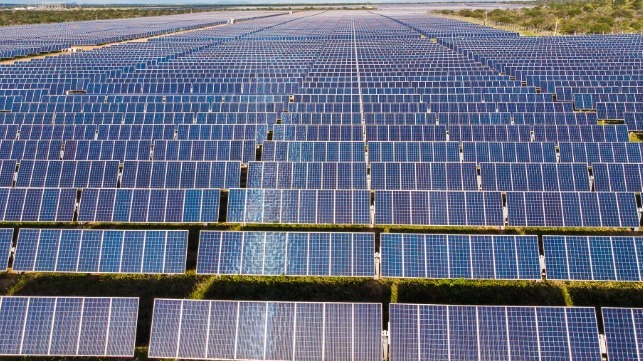
China is on track to become a powerhouse for the production of green hydrogen, one of the most promising alternative fuels for shipping, according to recent reports from BloombergNEF and Fitch. As the world's largest shipbuilder, largest exporter, largest port operator and third-largest shipowner, China's fuel policy choices will have a significant impact on the composition of the world fleet.
Hydrogen power is prominently included in the Chinese Communist Party's 14th Five-Year Plan. At present, most of China's hydrogen comes from coal gasification or steam reformation of methane, but green hydrogen (from renewable electricity) is a high priority as China takes aim at carbon neutrality by 2060. According to IEA data, China has 20 green hydrogen projects under development today.
As the cost of the electrolyzer units used to split water into hydrogen and oxygen comes down, the share of green hydrogen in China's economy is expected to rise. The Hydrogen Council predicts that electrolyzer prices are going to fall by 70-80 percent within ten years' time, dramatically lowering total cost of production.
The prospect of a hydrogen value chain is attracting large Chinese companies, including solar manufacturer GCL, which is jettisoning its solar power station assets and investing in new hydrogen projects. It plans to build out about 400,000 tonnes of green hydrogen capacity in China, predominantly from solar power sources, and it is investing in a much larger conventional natural gas-to-hydrogen project in Ethiopia. "We are re-locating ourselves and focusing on a new racing track," GCL Chairman Zhu Gongshan told Reuters.
However, there may be a timeframe mismatch between when Chinese production of electrolyzers ramps up and when demand for electrolyzers materializes. BloombergNEF expects that next year, demand for electrolyzers will be in the range of 2 GW - an unprecedented number driven up by growth in China. The same year, electrolyzer manufacturing capacity will hit 10 GW, rising to 16 GW by 2024 - creating an oversupply that could drive down electrolyzer prices and prompt further uptake.
“What's happening in China right now is revolutionary for clean hydrogen,” said Martin Tengler, lead hydrogen analyst at BNEF. "Chinese companies are racing to show their compliance with the country's carbon neutrality target, pushing the market for electrolyzers . . . to be at least nine times bigger in 2022 than in 2020."
Rotterdam Explores Importing Norwegian Blue Ammonia
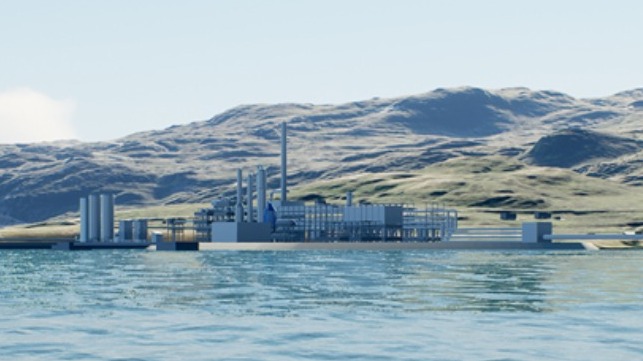
The Port of Rotterdam is pushing forward aggressively to become a leader in the emerging hydrogen sector. Northwest Europe will have to import hydrogen on a large scale to achieve its goal of becoming net-zero on carbon emission and the Port of Rotterdam Authority is looking to create those supply chains for hydrogen and ammonia from countries where hydrogen can be produced and supplied cost-effectively. The port authority notes that already half of the Dutch projects developing hydrogen are centered in Rotterdam and their goal is to become the hub for northern Europe.
In the latest development to build that supply chain, the Port of Rotterdam will work with a Norwegian start-up, Horisont Energi, that provides clean energy and carbon storage services at an industrial scale. Together they will explore a collaboration to ship blue ammonia, produced in northern Norway, from natural gas with carbon capture and storage, to the port of Rotterdam.
“There’s an important role for blue hydrogen if we want to realize the international climate ambitions,” said Nico van Dooren, director of New Business at the Port of Rotterdam. In the coming years, he notes, “there will not be enough green hydrogen to meet the demand. We’ll need every possible solution. We, therefore, focus not only on green but also on blue, just as we don’t only look at local production but also at imports.”
Horisont is seeking to develop its production plant near Hammerfest in the northernmost part of Norway. The fully automated plant would draw gas from the nearby Melkøya LNG plant producing more than one million tons annual of ammonia. It would have a capacity to produce 600 tons per day of blue hydrogen and 3,000 tons per day of blue ammonia with the CO2 stored off Finmark, Norway. A final investment decision for the production of blue ammonia at the Barents Blue project is expected towards the end of 2022.
Blue ammonia could be shipped to Rotterdam by 2025 and would be distributed to meet expected demand in Northwestern Europe. In addition to being a key industrial gas used in the fertilizer and chemical sector, ammonia is a very efficient hydrogen carrier. This makes net zero CO2 emission ammonia one of the most promising fuels for decarbonization of the shipping industry.
The port of Rotterdam is an energy hub port for western Europe, with some 13 percent of total energy demand in Europe entering the EU via Rotterdam. The port has the ambition to be net-zero CO2 emission in 2050 while at the same time maintaining its pivotal role in the European energy system. In addition to this effort with Norway, last week the port said it was also exploring hydrogen imports using chemical carriers. The demand in Rotterdam is expected to be up to 20 million tons of hydrogen, equivalent to 100 million tons of ammonia, in 2050, according to Port of Rotterdam estimates.
JOHN TIMMER -

Enlarge / A Coradia iLint hydrogen fuel-cell powered prototype railway train, manufactured by Alstom SA, travels in Salzgitter, Germany.
If you were paying attention at the start of this century, you might remember the phrase "hydrogen economy," which was shorthand for George W. Bush's single, abortive attempt to take climate change seriously. At the time, hydrogen was supposed to be a fuel for vehicular transport, an idea that still hasn't really caught on.
But hydrogen appears to be enjoying a revival of sorts, appearing in the climate plans of nations like the UK and Netherlands. The US government is investing in research on ways to produce hydrogen more cheaply. Are there reasons to think hydrogen power might be for real this time?
A new report by research service BloombergNEF suggests that hydrogen is set for growth—but not in transport. And the growth has some aspects that don't actually make sense given the current economics.
A gas that’s not really for cars
There are currently two primary ways of producing hydrogen. One involves stripping it from a hydrocarbon such as the methane in natural gas. CO2 is a byproduct of these reactions, and at present, it is typically just released into the atmosphere, so the process is anything but carbon neutral. That carbon can be captured and stored relatively easily, however, so the process could be clean if the capture and storage are done with renewable or nuclear power. The same caveat applies to producing hydrogen by water electrolysis: It needs to be done with low-carbon power to make sense for climate goals.
But something else has changed since the early talk of a hydrogen economy: Battery prices have plunged, and widespread electric vehicle use is a viable option for decarbonizing a lot of transportation. There are still some types of vehicles, like trains, for which batteries aren't a great option and hydrogen could play a role. But looking out to the end of the decade, BloombergNEF sees transportation generating only about 10 percent of the total demand.
Instead, BloombergNEF foresees countries using hydrogen as part of a larger integrated plan to reach national climate goals. If things go according to these plans, carbon-neutral hydrogen will be used in segments of the economy that are difficult to decarbonize otherwise.
One option for hydrogen is to supplement renewable power during periods of low productivity. BloombergNEF suggests that fossil fuels will outcompete hydrogen economically unless there's a price on carbon high enough to drive capturing the emissions of fossil fuel plants. Batteries will also be cheaper for shorter periods (three hours or less). So while renewal power is expected to be a major source of demand, it will be heavily reliant on carbon pricing to make economic sense.
Perhaps more promising are industrial uses like oil refining and ammonia production, which already use a lot of hydrogen produced from fossil fuels. Some additional processes, like metal production, don't currently use hydrogen but could switch to it to decarbonize. Again, making hydrogen attractive at current hydrogen prices will require a price on carbon. Canada and EU members will likely implement these practices first, and EU countries have some of the most concrete roadmaps for hydrogen use.
Volume production
For many countries, economical hydrogen production depends on policies that aren't yet in place. However, BloombergNEF foresees a short-term boom in our ability to produce it. Based on announced plans, manufacturers of hydrogen-producing hardware will produce an additional 10 GW of hardware annually by the end of next year. (Hydrogen-producing equipment is rated based on the electricity it consumes.) In contrast, Bloomberg predicts a demand of under 2 GW of hardware at that time.
Some of the production expansion appears to be a response to China's announced plan to be carbon neutral by 2060. While China hasn't detailed its roadmap to get there, industries in the country seem to be acting in anticipation of what the pathway might look like. BloombergNEF also acknowledges that the plans of companies in China are often opaque, and they'll sometimes announce facility openings only as they are happening. So there's a chance that Bloomberg is underestimating demand.
Still (and this is our analysis, not BloombergNEF's), the situation echoes what happened with solar panels. China had invested in production capacity that outstripped the present demand, leading to low-priced exports that helped stimulate demand in a number of other countries and set off a cycle of price drops and demand expansion.
This could potentially work for hydrogen-production equipment as well, but there's a key difference here. While solar panels help offset carbon emissions whenever they're put to use, hydrogen production hardware will do so only when it's paired with renewable or nuclear power. And it's unlikely that there will be a lot of excess power in three years after all that equipment production is online. So while the expected overproduction could stimulate hydrogen production, it could also be meaningless before the end of the decade, when other pieces of policy are in place.
JOHN TIMMER
Japanese Engine Manufacturers Launch Hydrogen Marine Engine Company
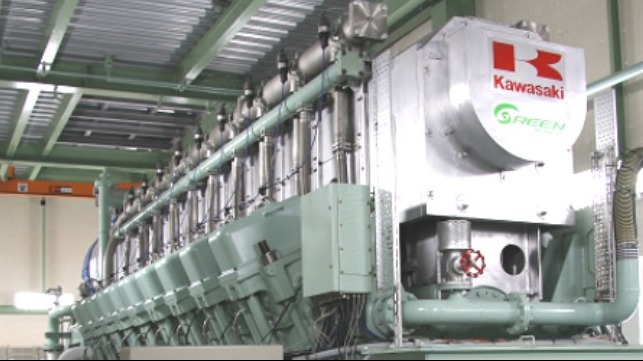
As a next step in the development of new, green propulsion systems for the maritime sector, three of Japan’s leading engine manufacturers announced the formation of a new company designed to develop and market hydrogen-fueled marine engines. With the establishment of HyEng Corporation, Kawasaki Heavy Industries, Yanmar Power Technology Co., and Japan Engine Corporation are seeking to accelerate their drive to develop new markets, realizing the opportunities for decarbonization in the maritime sector.
With the growing focus on reducing greenhouse gas emissions, the companies expect marine engines to transition to various alternative fuels in the coming years. Among the many alternatives, they highlighted that hydrogen is attracting global interest for its application in a wide range of energy and mobility industrial sectors as a fuel that offers zero emissions. In taking the step to form HyEng, the engine manufacturers are increased their focus with the goal of joint development of world-leading marine hydrogen-fueled engines.
The three companies announced in April 2021 that they were forming a consortium to pursue the joint development of hydrogen-fueled marine engines for ocean-going and coastal vessels. By cooperating on common fundamental technologies, such as basic experiments and analysis on hydrogen combustion, materials, and sealing techniques, as well as classification society requirements, each company aims to bring hydrogen-fueled engines to the market by 2025.
Kawasaki Heavy Industries will develop medium-speed 4-stroke engines, Yanmar Power Technology will focus on medium- and high-speed 4-stroke engines, and Japan Engine Corporation will embark on the development of low-speed 2-stroke engines. By pursuing a strategy of simultaneously developing the three sectors, the companies believe it will enhance the product lineup of propulsion and auxiliary (generator) engines for a wide range of vessels. In addition, a hydrogen fuel storage and supply system will be developed as part of the integrated hydrogen fuel system.
By developing advanced hydrogen marine engine technologies based on distinctive engines and quickly launching in the market, the consortium seeks to contribute to the Japanese shipbuilding industry. Furthermore, the companies aim to revitalize the Japanese maritime industry and realize a sustainable society by promoting the uptake of hydrogen-fueled engine technology for marine vessels.
Scottish Wind Project Seeks Advantage with Hydrogen Partnership
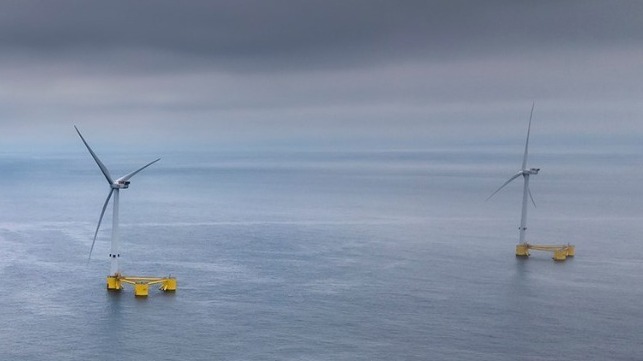
Interest continues to grow for the potential of combining offshore wind projects with hydrogen to create a green process for the creation of the future fuel. In the latest development, the Salamander floating wind project in development for the northeast coast of Scotland near Aberdeen said it is pursuing the opportunity to become the world’s first combined floating wind and green hydrogen project putting it in competition with similar projects proposed for other areas in Europe.
The 200 MW Salamander floating wind project, developed by the Irish company Simply Blue Energy in partnership with Subsea 7, signed a memorandum of understanding with sustainability consultancy ERM for the potential use of the ERM Dolphyn hydrogen technology. The technology combines electrolysis, desalination, and hydrogen production on a floating wind platform. The hydrogen would be transported to shore through a pipeline. ERM Dolphyn aims to undertake a 10 MW demonstration project, which would produce green hydrogen offshore and provide the first step needed to scale up at Salamander. According to the companies, it is an economic and scalable solution, which produces green hydrogen with no carbon emissions at the point of use.
“When we started the Salamander project, we always envisioned a stepping-stone project and a catalyzer for future, bigger commercial opportunities,” said Adrian de Andres, Salamander Project Director. “Considering the rapidly approaching 2030 deadline for the floating wind and green hydrogen targets, we now think the Salamander project could act not only as a stepping-stone for floating wind but also potentially for green hydrogen production, paving the way for multi-GW green hydrogen developments in the 2030s.”
The Salamander project is targeting a lease under the upcoming Innovation & Decarbonization leasing process and now plans to put forward its ambitious green hydrogen plans to Crown Estate Scotland and Marine Scotland. The hope is that by incorporating hydrogen into their proposal it will provide them an advantage in the upcoming leasing process.
According to the companies, the proximity of the site for the Salamander project to St Fergus Gas Terminal along with the plans for a hydrogen infrastructure in the region around Aberdeenshire and Aberdeen City make their project ideally suited for the combination of offshore wind and hydrogen. They also noted that they are working closely with Scotland Gas Networks (SGN) to potentially integrate with and connect into future hydrogen infrastructure or as a blend with existing gas infrastructure, which SGN is aiming to develop.
The Salamander project they said has been investigating different routes to market since its inception and due to its advantageous location off Aberdeenshire, the project believes producing green hydrogen is a very interesting option.
Scotland has become one of the emerging hotbeds for potential offshore wind projects with both major corporations and emerging companies all seeking to participate in the market. The Scottish government has set a target to reach 11 GW of offshore wind capacity in its waters by 2030. The next round of the leasing project is expected to be announced in early 2022.



